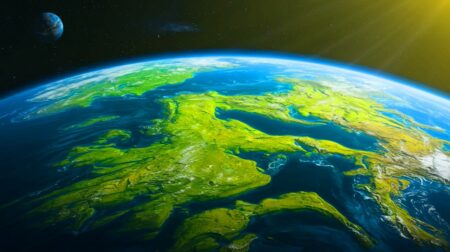Photo: Pixabay/truthseeker08
Glaciers in the Himalayas are melting at an “exceptional” rate as they have lost ice 10 times more quickly over the last few decades than on average in previous decades after the so-called Little Ice Age.
In fact, Himalayan glaciers are disappearing far more rapidly than glaciers elsewhere.
This alarming discovery has come courtesy of a team of scientists at Leeds University in the United Kingdom who reconstructed the extent of nearly 15,000 glaciers in the Himalayas during the Little Ice Age when ice sheets worldwide greatly expanded during a period of global cooling between four and seven centuries ago.
By now, however, Himalayan glaciers have lost around 40% of their former area during that period, shrinking from as much as 28,000 square kilometers to just 19,600 kilometers, the scientists explain in a study.
“The ten-fold acceleration in ice loss we have observed across the Himalaya far exceeds any centennial-scale rates of change that have been recorded elsewhere in the world,” the scientists report.
“Rates of mass loss depend on monsoon influence and orographic effects, with the fastest losses measured in East Nepal and in Bhutan north of the main divide,” they observe.
“Himalayan glaciers are also declining faster where they end in lakes, which have several warming effects, rather than where they end on land. The number and size of these lakes are increasing so continued acceleration in mass loss can be expected,” the scientists note in a statement on their findings.
“Similarly, glaciers which have significant amounts of natural debris upon their surfaces are also losing mass more quickly: they contributed around 46.5% of total volume loss despite making up only around 7.5% of the total number of glaciers,” they say.
The shrivelling up of glaciers in the Himalayan mountain range, which has the world’s third-largest amount of glacier ice (after Antarctica and the Arctic), is bad news for millions of people iving in and around the Himalayas as their freshwater sources will become increasingly stressed. Rivers that originate in the Himalayas include the Brahmaputra, Ganges and Indus, upon which hundreds of millions of people depend.
“People in the region are already seeing changes that are beyond anything witnessed for centuries,” said Simon Cook, a senior lecturer in geography and environmental science at the University of Dundee who was a coauthor of the study.
“This research is just the latest confirmation that those changes are accelerating and that they will have a significant impact on entire nations and regions,” Cook added.
Local ecosystems will also be severely impacted with the loss of ice in the mountain range, the experts have warned, adding that much of the ice loss is being driven by manmade climate change.
Did you like it? 4.6/5 (22)








